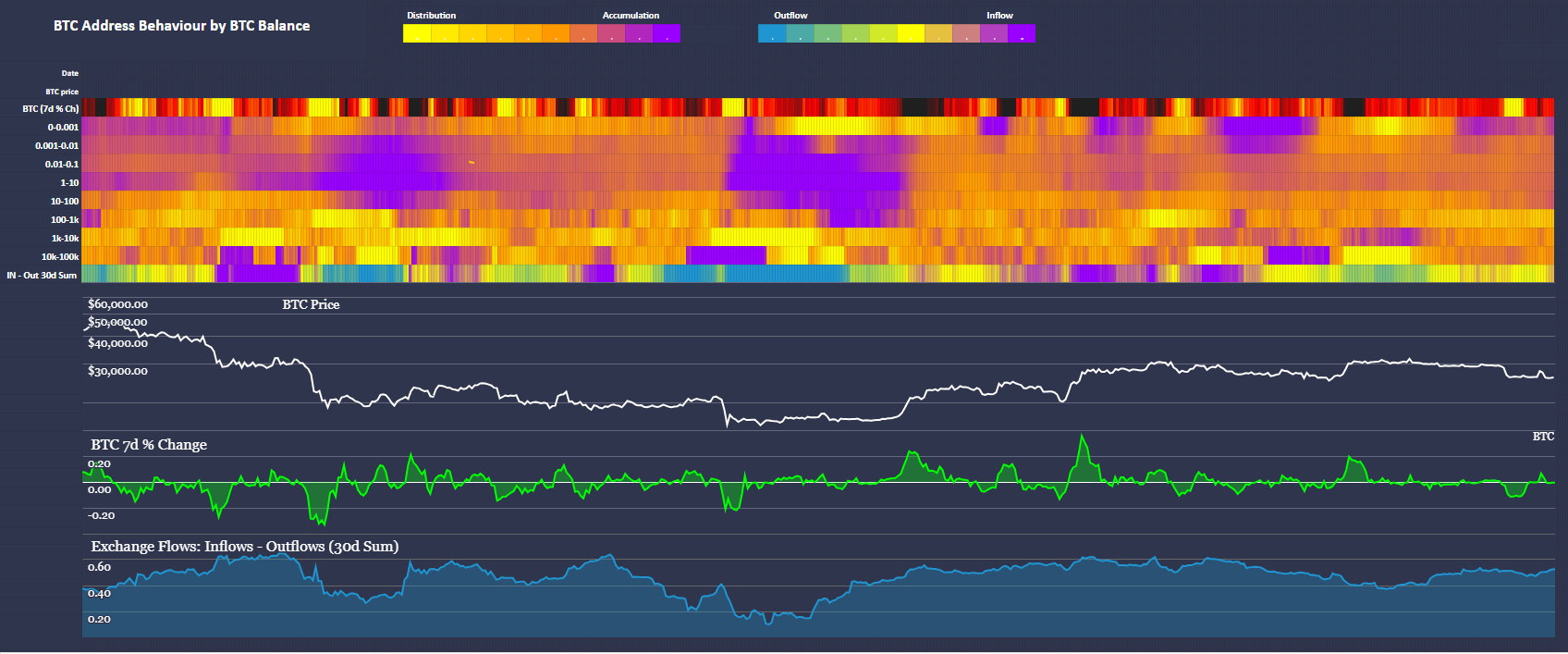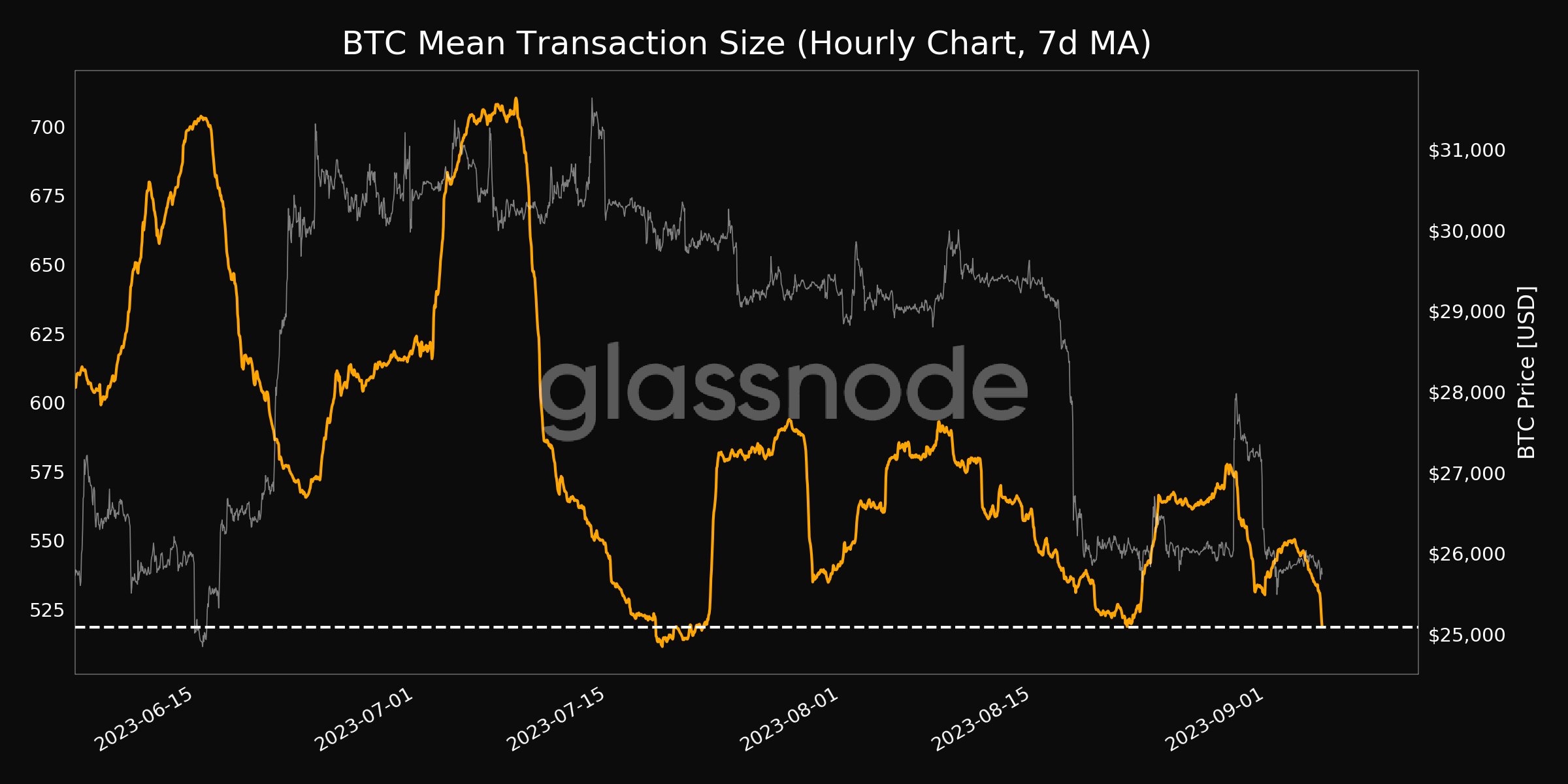- Wallets were still expanding, but growth rates had decreased, particularly among those holding 10,000 to 10,000 Bitcoins. These larger groups often have a more significant impact on market dynamics.
- Another concerning sign was the average transaction size. According to Glassnode, Bitcoin’s average transaction size experienced a monthly decline, reaching 518,646 in a seven-day average.
- Bitcoin’s estimated volatility has also decreased over the past few months. Implied Volatility measures the market’s expectations for future price fluctuations. A decrease in implied volatility indicates that traders are expecting price stability or a more predictable period.
Growth in the Bitcoin network continues, but growth in whales has contracted; Volatility is falling but positive emotions are rising.
Bitcoin’s Price Continues Its Slow Movement

Bitcoin, as of the time of writing, continued to hover around $25,700, testing the patience of its holders. Furthermore, recent data indicated an overall slowdown as the downward momentum persisted.
A significant indicator of this slowdown was the overall change in Bitcoin wallets over a 30-day period. Wallets were still expanding, but growth rates had decreased, particularly among those holding 10,000 to 10,000 Bitcoins. These larger groups often have a more significant impact on market dynamics.
Hence, the slowing momentum of Bitcoin could affect its performance and investor sentiment. Slower growth might deter new investors and speculators, potentially leading to a slowdown or a decline in the cryptocurrency’s price.
Another concerning sign was the average transaction size. According to Glassnode, Bitcoin’s average transaction size experienced a monthly decline, reaching 518,646 in a seven-day average.
A decline in this average transaction size typically indicates reduced activity or a change in the type of network transactions.
Bitcoin has also faced challenges in the NFT sector. Activity related to Ordinals, in particular, has decreased across all major exchanges, reflecting a broader trend of declining interest.
How Are Traders Performing?
Traders have taken a bearish stance on Bitcoin, as indicated by the increasing put-call ratio. This ratio has risen from 0.42 to 0.47 in recent weeks.
With a higher put-call ratio, it suggests that more traders are betting on Bitcoin’s price falling rather than rising, reflecting a cautious shift in market sentiment.
Additionally, Bitcoin’s estimated volatility has decreased over the past few months. Implied Volatility measures the market’s expectations for future price fluctuations. A decrease in implied volatility indicates that traders are expecting price stability or a more predictable period.
While this may be seen as a positive sign for some investors, it could also indicate a lack of speculative interest and contribute to Bitcoin trading within a narrower price range.





